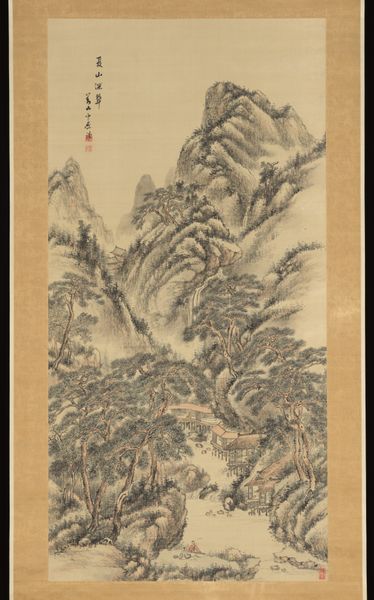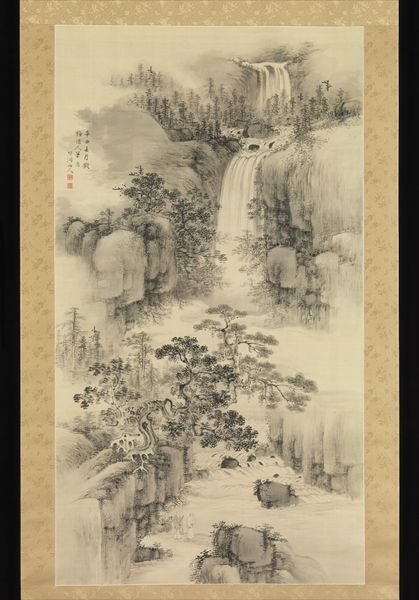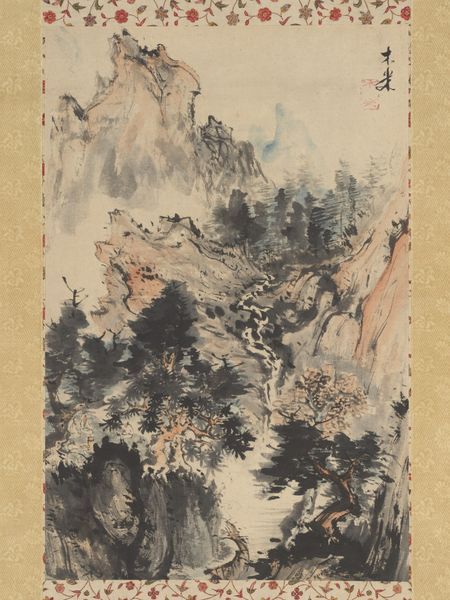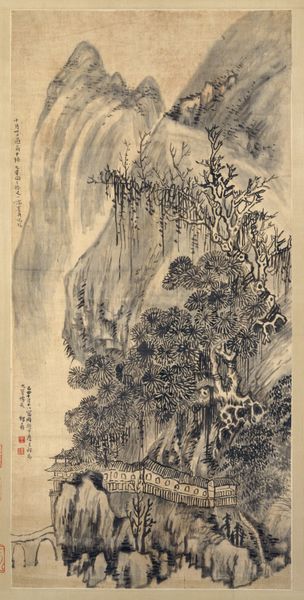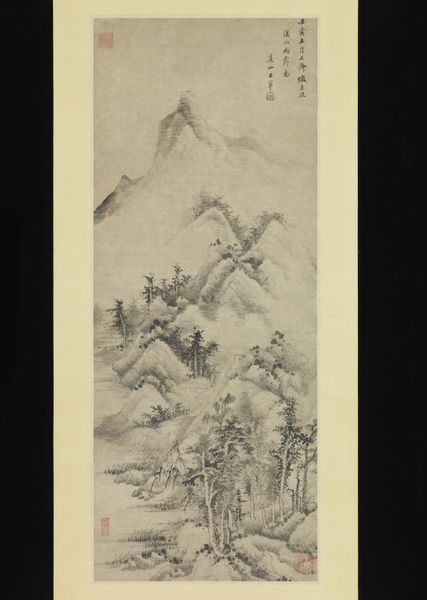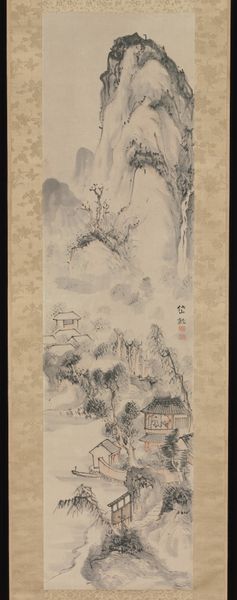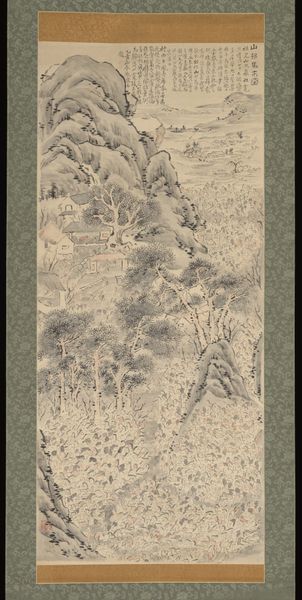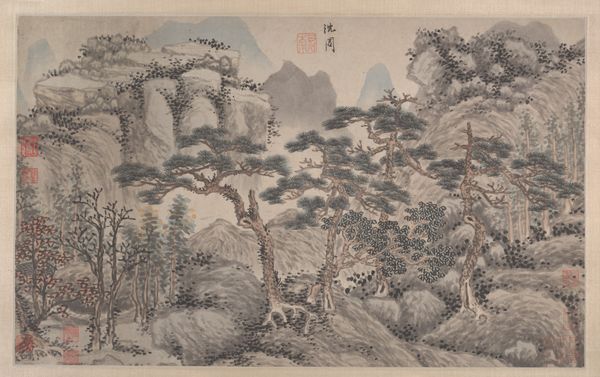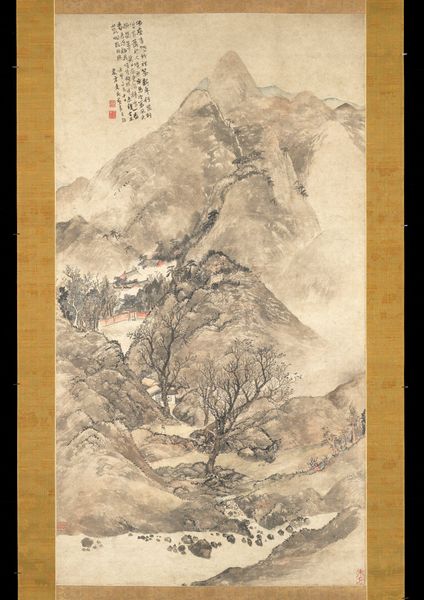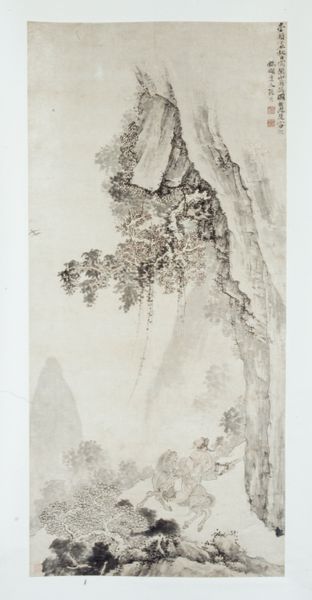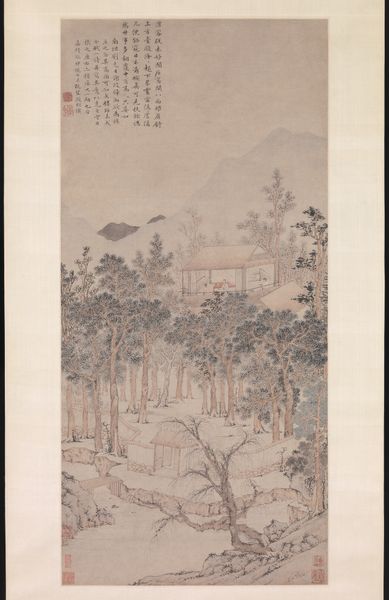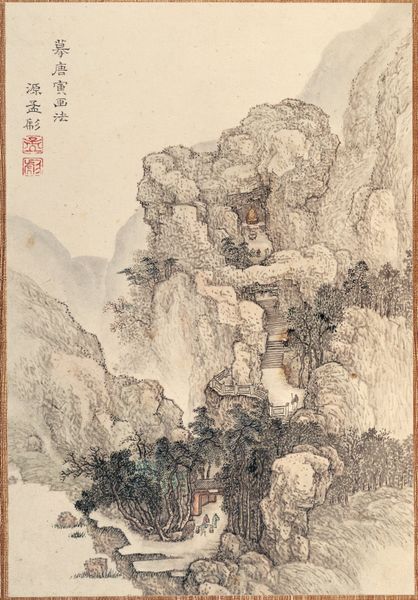
Dimensions: Image: 50 13/16 × 21 7/8 in. (129.1 × 55.6 cm) Overall with mounting: 77 1/4 × 25 15/16 in. (196.2 × 65.9 cm) Overall with knobs: 77 1/4 × 28 1/8 in. (196.2 × 71.4 cm)
Copyright: Public Domain
Curator: This is "Viewing a Waterfall," a watercolor and ink painting on paper, created in 1793 by Kushiro Unsen. It is currently housed at the Metropolitan Museum of Art. Curator: My first thought? Tranquility. The soft grays and subtle gradations of ink create such a serene visual experience. The verticality of the composition and its texture guide the eye upward in a rather captivating manner. Curator: Absolutely. Kushiro Unsen, painting in the late Edo period, captured a deep reverence for the natural world but also infused social and cultural ideals of that time. Landscape painting in this period was so deeply intertwined with personal reflection, but also a commentary on isolation of social circles that would view or acquire similar artworks to enhance their space. Curator: The brushwork is exquisite, notice how he uses varied line weights to define the textures of the rocks versus the fluidity of the waterfall. There’s a real dynamism here too, despite the tranquil overall feeling. Curator: And if we unpack that dynamism, doesn't it also suggest the artist's position within the rigid social structures of Edo Japan? The solitary figure often depicted, though absent here, symbolizes both harmony and alienation, perhaps reflecting a tension that many artists felt at the time in expressing artistic views? Curator: Interesting take. I see it more as an exercise in perspective and spatial recession. He's skillfully created depth using atmospheric perspective, which also contributes to the dreamlike quality, a detachment, yes, from a tangible reality. Curator: Which could certainly reflect a desire for escape or a critique of society. After all, many artists also used their work to express resistance. Think of the sociopolitical commentary that would accompany the exhibition of this kind of image to create circles of resistance or debate in drawing rooms and studies across Japan at that time. Curator: Whether escape or critique, the effectiveness stems from the art’s ability to draw the eye in, guiding our vision throughout the scroll in such a controlled manner. Curator: Ultimately, the confluence of social context and artistic execution gives “Viewing a Waterfall” such deep meaning. Curator: Indeed. This piece exemplifies the powerful effects achieved through simplicity of form. A lot can be said without much visual loudness, I think is proven in Unsen's waterfall.
Comments
No comments
Be the first to comment and join the conversation on the ultimate creative platform.
